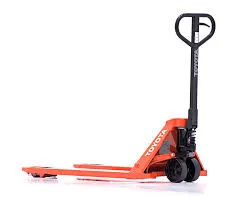


Understanding Fall Protection FAQ Guide
Fall protection is a critical aspect of workplace safety, especially in industries involving construction, scaffolding, or heights. As many workers are exposed to the risk of falling, understanding the nuances of fall protection is essential. This article addresses frequently asked questions about fall protection to help ensure a safer working environment.
What is Fall Protection?
Fall protection refers to systems, equipment, and procedures designed to prevent workers from falling from elevated surfaces or to protect them if falls occur. It encompasses various measures, including guardrails, safety nets, and personal fall arrest systems (PFAS).
Who Needs Fall Protection?
Anyone working at heights—generally six feet or more in construction, or at four feet in general industry—requires some form of fall protection. This includes roofers, scaffolders, and outdoor maintenance workers, among others.
What Are the Types of Fall Protection Systems?
There are several types of fall protection systems
1. Guardrails Barriers installed along edges of elevated surfaces to prevent falls. 2. Personal Fall Arrest Systems (PFAS) Including harnesses, lanyards, and anchor points. These systems are designed to arrest a fall before a worker hits the ground.
3. Safety Nets Installed below work areas, safety nets catch falling workers and materials.
4. Positioning System Allows workers to be supported on an elevated vertical surface, ensuring they work hands-free while preventing falls.

5. Warning Lines and Safety Monitors Used primarily in roofing operations to alert workers of nearby edges.
When Should Fall Protection Be Used?
Fall protection should be used anytime there is a risk of falling from heights. This requirement also extends to potential fall hazards, such as uneven surfaces or slippery areas. Implementing protective measures before work begins is crucial.
How Can Employers Ensure Compliance?
Employers need to conduct regular risk assessments to identify potential fall hazards within the workplace. By providing appropriate training, safety gear, and clear procedures, employers can foster a culture of safety. Additionally, routine inspections of fall protection equipment ensure that all systems are functioning correctly and meet safety standards.
What Are the Consequences of Not Using Fall Protection?
Failure to implement fall protection measures can lead to severe consequences, including workplace injuries, fatalities, and legal ramifications. Companies may face hefty fines from regulatory bodies like OSHA if found non-compliant. Moreover, the emotional and financial toll on affected employees and their families is immeasurable.
What Should Workers Know About Fall Protection?
Workers must be trained not only in the use of fall protection equipment but also in recognizing potential hazards, understanding the correct procedures, and knowing how to react in case of an emergency. This knowledge empowers them to protect themselves and their colleagues.
Conclusion
Understanding fall protection is vital in safeguarding the health and safety of workers exposed to fall hazards. By asking questions, seeking proper training, and adhering to established safety protocols, both employers and employees can significantly reduce the risk of falls, ensuring a safer work environment for all. Through proactive measures and continuous education, we can make every workplace safer and prevent tragedies caused by falls from height.



